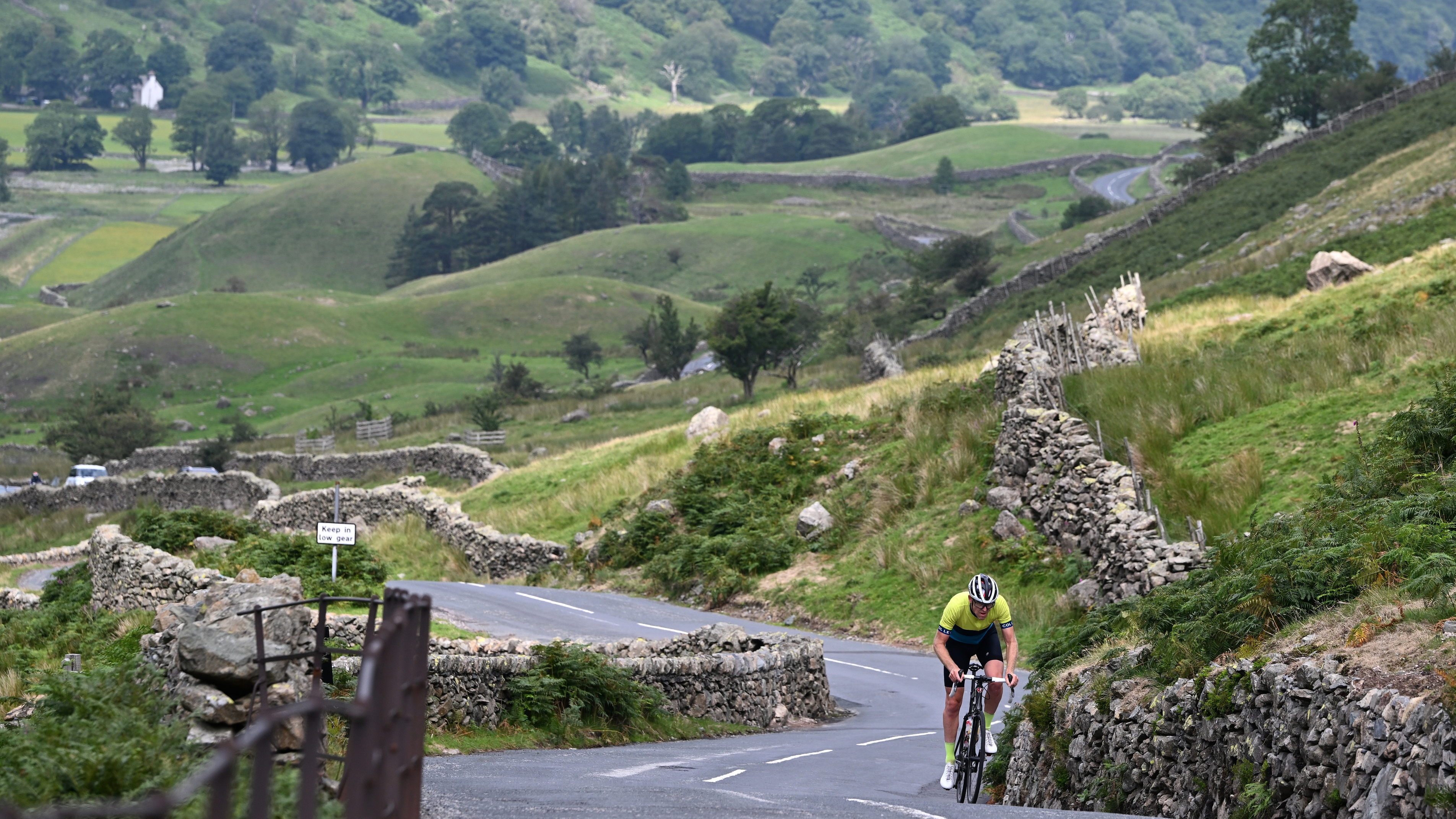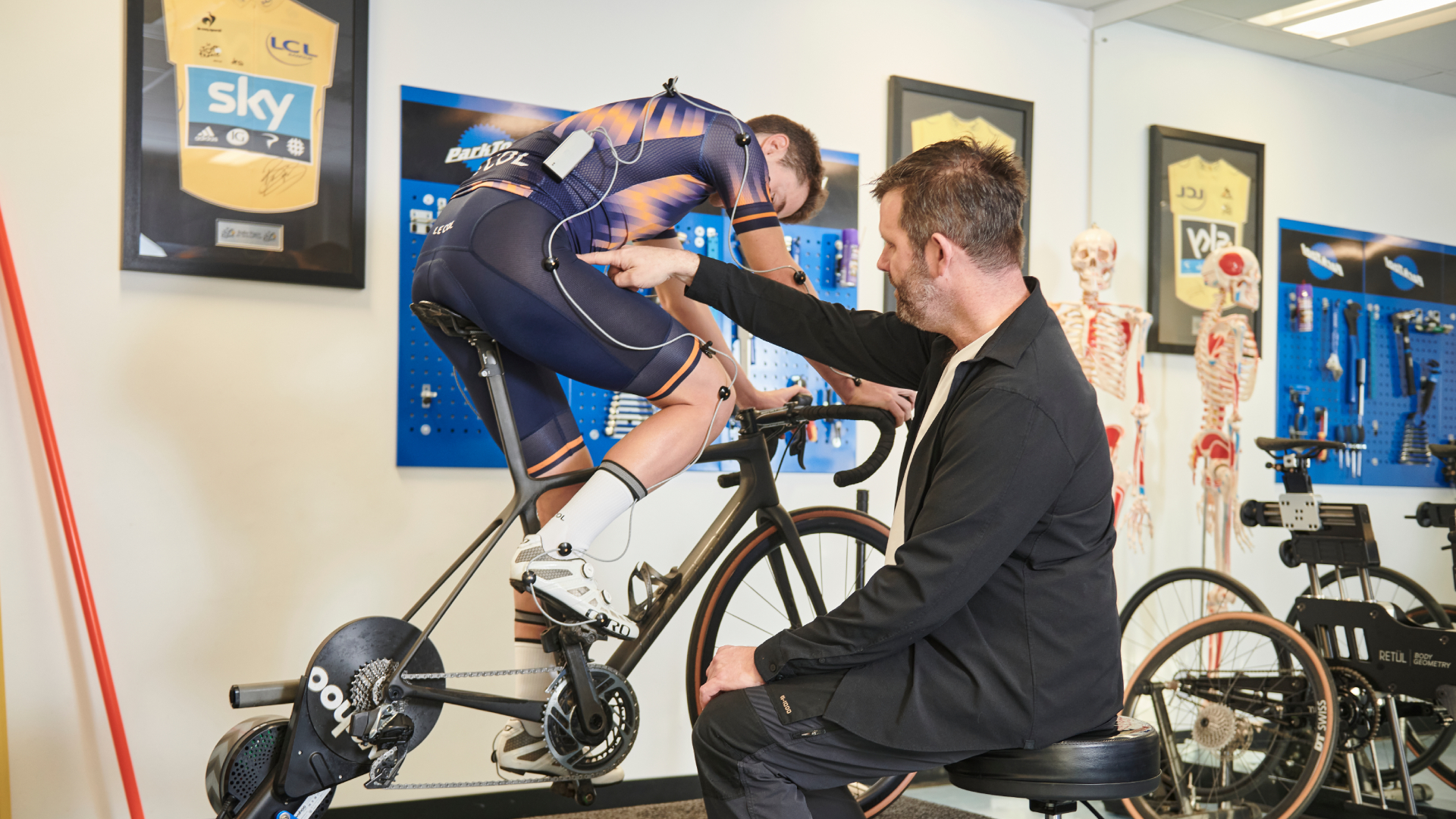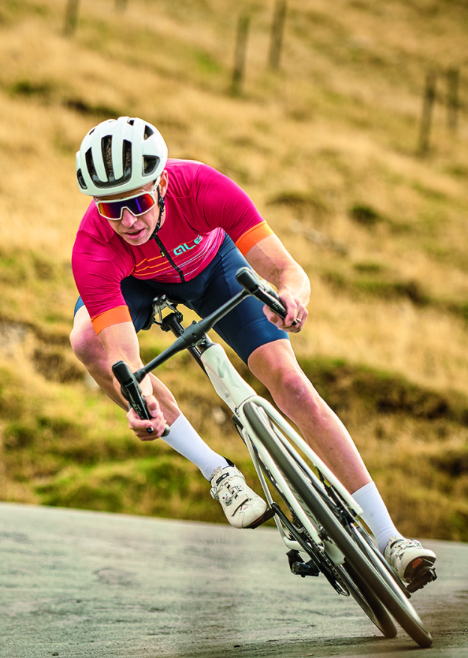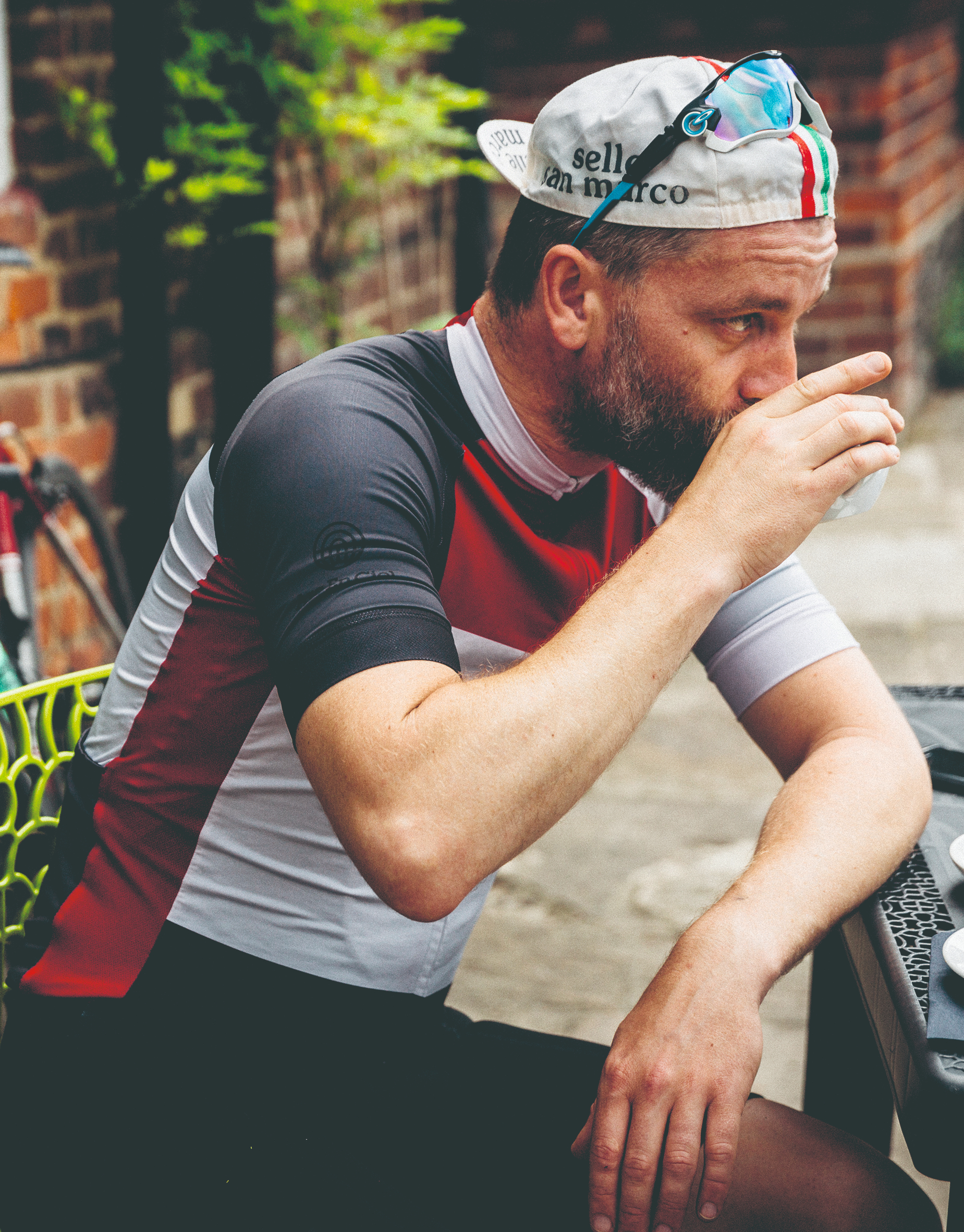How to enjoy your longest ride of the year
An epic summer ride is an unforgettable experience. Anna Gardiner shows us how to get the most out of it


With midsummer upon us, the thrill of the long and winding road beckons for many. Whether you’re a seasoned cycling aficionado, or an enthusiastic weekend cyclist gearing up for your first epic journey, it’s essential to prepare body, bike and mind for the adventure. That’s why we’ve put together some top tips and invaluable advice to help you achieve your goals and prepare you for your longest ride of the year.
Before the ride
Train for the distance
Training for a long ride, be it an organised event or just a big day out with your friends or club mates, would ideally take place over six to 12 weeks – provided you’re already reasonably fit. This will allow you to steadily build up your endurance. But with the longest day of the year now behind us, a bit of fitness cramming is probably on the cards.
No matter your current level of fitness, everyone can benefit from focused sessions, which can be done on the road or on the turbo. Two 60-90 minute sessions a week (sweetspot or FTP sessions) will bring rapid benefits even if you’ve already got a good level of fitness.
That said, longer rides are also needed to condition the body and get it used to more hours in the saddle. If your target day or event is five hours long, two or three four-hour rides in the weeks or months before would be ideal. You don’t need to ride your target time, save that for the big day. Rides of three-quarters the time will be enough to get you ready. If you don’t have a spare four-hour block, a two-hour ride early in the morning and another in the evening will bring similar benefits, just be sure to keep them slow and steady.
As well as conditioning your aerobic capacity and building your endurance, these long rides can be used to practise fuelling and hydration. What and how much food and drink you’ll carry and consume is a key factor and something worth getting right.
Mobilise for comfort
The latest race content, interviews, features, reviews and expert buying guides, direct to your inbox!
Incorporating regular stretching, yoga, pilates or mobility exercises, as well as targeted strengthening into a training routine helps improve flexibility and overall resilience for long rides. Focus on muscle groups including hamstrings and quadriceps (for power during pedalling); the hip flexors (for a more efficient pedal stroke and maintaining good posture on the bike); the lower back muscles (keeping them mobile so that the back doesn’t stiffen up); and shoulders and upper body (to aid bike handling and comfort). This off-bike work makes a long bike feel more comfortable and helps prevent injury. Warm up properly before any exercise and maintain good form to avoid injury.
Map out your success
Unless you specifically want the thrill and freedom of heading into the unknown it’s worth planning your route in detail and saving it with turn-by-turn directions on your best bike computer. Knowing what terrain is ahead gives a huge psychological advantage and will help both your pacing and fuelling on the day. Plus, having directions appear on your device takes the stress of navigation out of the equation and lessens the chances of taking a wrong turn and then wasting time getting back on track. Both Strava and Komoot are great for route planning.

Make sure you're comfortable on the bike ramping up the miles
Get comfortable
There are obvious benefits to riding in aerodynamic kit over a long day, but your real focus must be on comfort. Your longest day should be spent in your favourite kit, most likely the items you instinctively turn to when dressing for a ride. It’s not unreasonable to have your position tinkered with before your biggest target either. As we age, our bodies change so if you haven’t had your riding position adjusted for a couple of years, now might be the time. Experienced bike- fitters will give you the time and advice to get it right, but there are also AI-powered apps available. We tried MyVeloFit last year and found it gave good results.
Make a plan
It’s all very well putting the big day on your calendar to avoid clashes, but what about all the training in the build-up? Life is busy and we all have unexpected invites and last-minute events pop up on our phones and throw our training off course. By scheduling all your training sessions you (and your family) immediately know what can and can’t be slotted in or when a little negotiation or on-the-hoof rearranging is required. A top tip we’ve heard from coaches and riders is to have this schedule somewhere everyone in your household can see it, so their expectations are reasonable. But be flexible too. Moving sessions around, or even missing or shortening the odd one won’t make a huge difference in the end, and no one wants to miss out on life’s other pleasures. If you complete 70% of your planned sessions, you’re doing well.
Check your kit
If you’ve nailed your training, the last thing you want is for your big day to be thrown off course by mechanical failure. A full service will have your bike running like a dream, but if you think that’s over the top, at the very least you should thoroughly clean your bike, lubricate your chain, and then check your tyres and brake pads for wear and tear – replace if necessary. Do this several days before the ride so there are no last-minute panics. Check your spares too, and think about taking at least one extra inner tube and a tyre boot. If running tubeless, take some plugs and make sure you know how to insert them. If things go drastically wrong when a long way from home, the most important ‘spares’ are your phone and credit card.

Make sure you check your kit before a long ride
Longest day for the longest ride
The longest day of the year is popular with riders looking to hit big miles, with Strava feeds likely to be full of 200-mile-plus rides in June
Chase the Sun events has tapped into this market with not just big rides, but big coast-to-coast rides that ‘chase the sun’ from west to east. Having started as one man’s simple desire to ride from coast to coast on the longest day it is now a four-event series attracting thousands of riders.
“We pitch ourselves as an anti-sportive,” co-director Phil Webb told us. “We don’t time anyone, you either finish before sunset, after sunset or you DNF.” The four rides are; UK South, 205 miles from Minster on Sea to Weston-Super- Mare, UK North, 200 miles from Whitley Bay to Ayr, Ireland, 209 miles from Belfast to Enniscrone, and Italy, 282 km from Cesenatico to Tirrena.
There are three levels of entry fee for each event depending on the amount of support you require and each one can be ridden as a relay. More info at chasethesun.org.
On the day
Carbs are king
It’s vital to get your fuelling right on the day. This starts with a carbohydrate-rich breakfast – a rough guide is 1-2g of carbs per kilo of body weight – for a 70kg rider, that’s 70-140g of carbohydrates. Porridge, bagel and peanut butter, eggs on toast and muesli are all good carb sources. A large bowl of porridge contains about 50g of carbs, so you might need to add toppings and/ or have a couple of courses. Eat this breakfast at least two hours before the ride.
How much fuel you need to carry depends on how long you’re intending to spend on the bike and how many food stops are planned. Dr Andy Middlebrook, exercise physiologist, recommends eating a carbohydrate snack approximately one hour before the ride, 500ml of carb-rich sports drink in the hour before the start, and then 60-90g of carbohydrate and 500ml of fluid every hour during the ride. Of course, if you’re riding your own route, you can incorporate a cafe, pub or shop for real food fuelling mid-ride. Sportives usually have organised food stops. On the day, use only tried-and-tested food to avoid any stomach distress.
Lube up!
Liberally apply chamois cream to your undercarriage even if you haven’t needed it in training – it definitely won’t hurt, whereas going without might! Don’t wear anything new to limit the likelihood of chafing or blisters and to ensure a known good fit. Also, check that there aren’t plastic tags or imperfections that can cause friction – it’s the little things that can make for an uncomfortable ride.
Laugh off the lows
Long rides inevitably feature low moments – you’ll doubt whether you can eke out one more pedal stroke! In these instances, focus on the training you’ve done, the hours of hard work that have led you to this point, and give yourself a pat on the back for making it this far. Have confidence in the bike strength that you’ve built up. Instead of thinking how many miles or kilometres you have left, think of how many are behind you. Envisage how you’ll feel at the finish – the pride from achieving your goal. Depending on how it’s going, you can spend time thinking of other bucket list cycling events or goals or, alternatively, take comfort from the fact that you never have to do this again once it’s done!
Pace for the distance
Andy Cook, British Cycling’s vice chair and ride guide extraordinaire is fond of the saying, “better to ride comfortably hard than hardly comfortable.” Spreading your effort through the ride while saving some in reserve for particularly hard sections is key. You’ll feel fresher – and more excited – at the start of the ride so remember to hold yourself back. Use descents or sections where you can sit behind others to recover, eat and even stand on the pedals and stretch your legs to move out of the fixed riding position.
Keep it real
Real food, rather than prepackaged energy products, is generally easier to absorb and digest, so have mini picnics along the way. Bread products, bananas, flapjacks, pretzels or new potatoes – keep to real to avoid gastrointestinal distress. That said, sports nutrition – gels, bars or chews – is useful for the latter stages.

Self-planned epics can include cafe stops for carb replenishment
Long-distance off-road routes to try
The gravel scene has opened up hundreds of miles of new routes, many of which not only off er you the chance to get some big miles in your legs, but to get them in far from the madding crowd. The Traws Eryi is one; here are three more favourites.
North Downs Way
Start: Farhnam, Finish: Dover, Distance: 132 miles, Elevation gain: 10,400ft
Possible to do in a day, but more enjoyable split over two or even three. This route, put together by Cycling UK is a mix of bridleway, green lanes and road using sections of bothe the North Downs and Pilgrims way. The first third is hilly and slow, the rest is rolling terrain on more hardpacked surfaces. Difficulty: 3/5
Kirkpatrick C2C
Start: Stranrear, Finish: Eyemouth, Distance: 246 miles, Elevation gain 12,025ft
Officially opened this spring, we rode the route last autumn over two days, although three would have made it more enjoyable. Brilliantly signposted in the main, and when you’re not on paths or waymarked routes, the roads are exceptionally quiet. There’s not too much climbing involved and it could be completed on a road or gravel bike. Difficulty: 3/5
Rebellion Way
Start/Finish Thetford (circular route) Distance: 232 miles, Elevation gain 7,956m
Tiny, car free lanes, exposed coastal roads and forests, this largely flat route has a lot to offer. As a circular route you can start and finish anywhere you want. There is lots of accommodation along the way, but if going at popular times it’s worth booking well in advance. Difficulty 2/5
Find all CW’s routes on Komoot.
After the ride
Replenish all areas
On the evening after the ride, rehydrate with plenty of (non-alcoholic) liquids, and eat a balanced meal with carbohydrates to replenish glycogen stores in muscles, protein for muscle repair, and healthy fats to replace energy stores. A beer or two is fine as a reward, too!
Take it easy
Your muscles will be crying out for rest and recovery after your event. An 80:20 carbohydrate-to-protein meal – beans on toast, for example – and a recovery shake within 20-30 minutes is ideal to kickstart muscle repair. Some riders swear by an ice bath followed by a warm bath (though the evidence is inconclusive). Over the next few days, a very gentle spin boosts blood flow to tired muscles and may help you feel looser and more energised. Be sure to keep any riding at conversational pace, as your body is busy healing – you don’t want to add to the stress, as you may be vulnerable to injury.
Keep moving
It’s important to keep some movement going over the few days after the ride, despite how tempting it might be to just sit (or lie!) down. After a warm bath or shower, practise some yoga, pilates or just some simple stretching, so that muscles don’t stiff en up. Walking or stretching little and often is important throughout the next few days, especially if you have a desk job. Getting back on the bike to go again is dependent on training prior to the event. A few days off the bike followed by a couple of easy recovery rides should mean you’re then ready to go again. More experienced riders should be able to resume easy rides after a rest day.

Anna Gardiner is a freelance writer,
soft-tissue therapist, and keen cyclist
and runner. She’s presently eyeing up
London to Brighton 2024 and
Chase the Sun 2025.